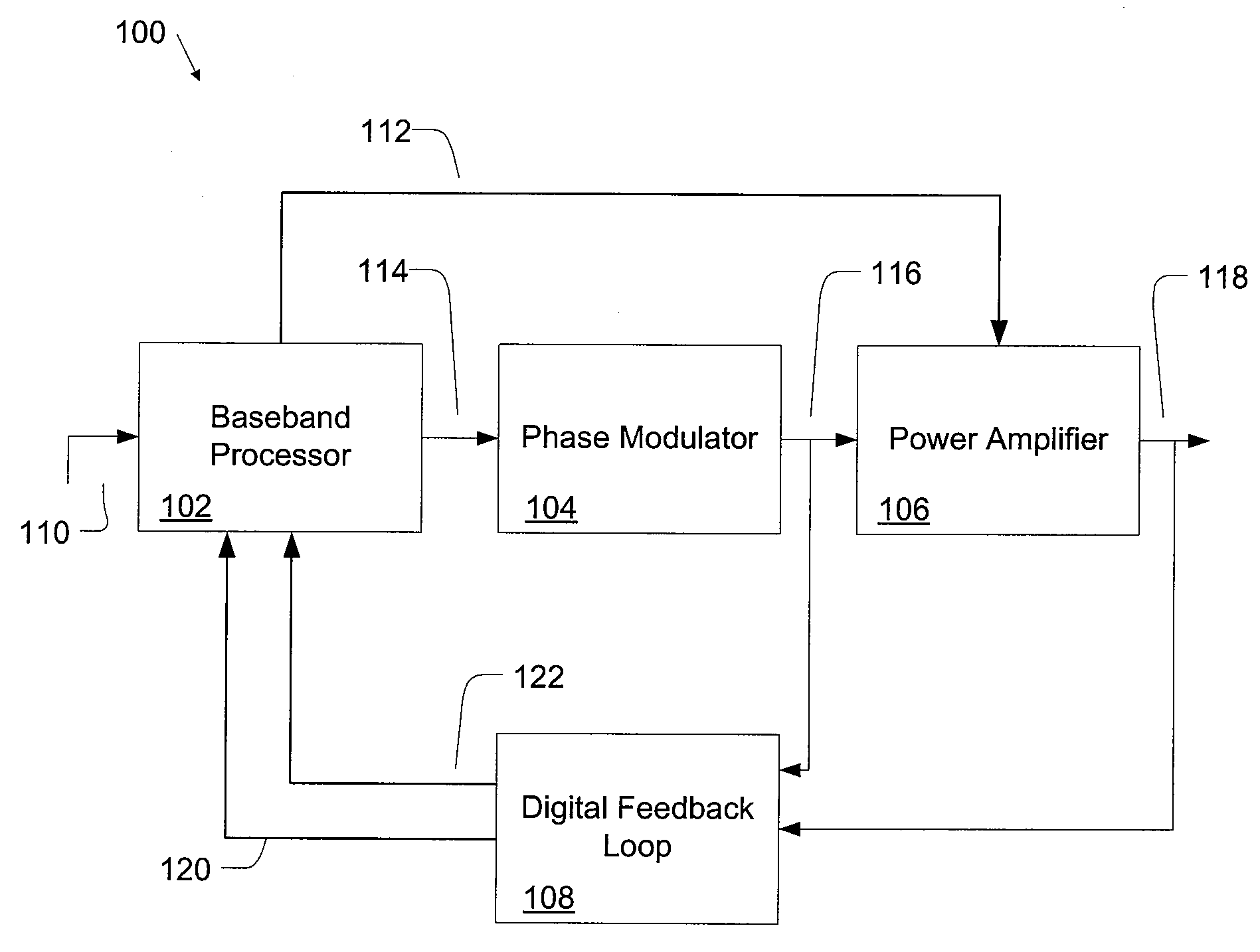Digital Polar Transmitter
a digital polar transmitter and transmitter technology, applied in pulse technique, dc level restoring means or bias distortion correction, baseband system details, etc., can solve the problems of reducing the efficiency of the nonlinear device, affecting the operation efficiency, and affecting the quality of the waveform,
- Summary
- Abstract
- Description
- Claims
- Application Information
AI Technical Summary
Benefits of technology
Problems solved by technology
Method used
Image
Examples
Embodiment Construction
[0022]The term “signal,” as used herein, should be broadly construed to include any manner of conveying data from one place to another, such as, for example, an electric current or electromagnetic field, including without limitation, a direct current that is switched on and off or an alternating-current or electromagnetic carrier that contains one or more data streams. Data, for example, may be superimposed on a carrier current or wave by means of modulation, which may be accomplished in analog or digital form. The term “data” as used herein should also be broadly construed to comprise any type of intelligence or other information, such as, for example and without limitation, audio, video, and / or text information.
[0023]FIG. 1 is a block diagram of a digital polar transmitter 100. The transmitter 100 includes a baseband processor 102, a phase modulator 104, a power amplifier module 106, and a digital feedback loop 108.
[0024]The baseband processor 102 receives a digital input signal 1...
PUM
 Login to View More
Login to View More Abstract
Description
Claims
Application Information
 Login to View More
Login to View More - R&D
- Intellectual Property
- Life Sciences
- Materials
- Tech Scout
- Unparalleled Data Quality
- Higher Quality Content
- 60% Fewer Hallucinations
Browse by: Latest US Patents, China's latest patents, Technical Efficacy Thesaurus, Application Domain, Technology Topic, Popular Technical Reports.
© 2025 PatSnap. All rights reserved.Legal|Privacy policy|Modern Slavery Act Transparency Statement|Sitemap|About US| Contact US: help@patsnap.com



